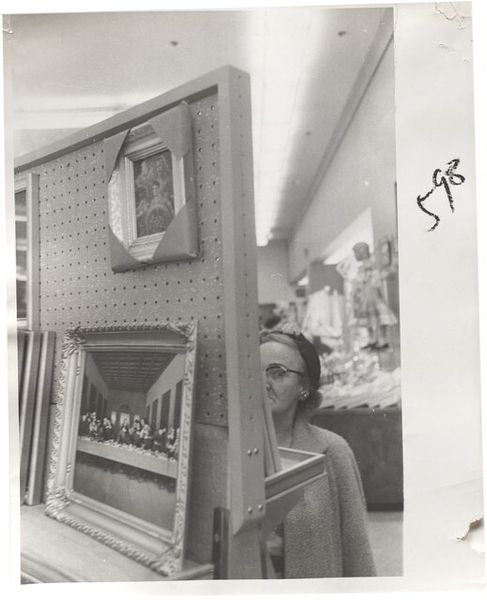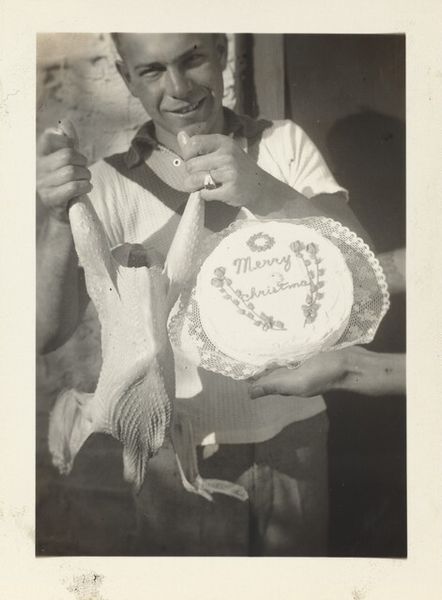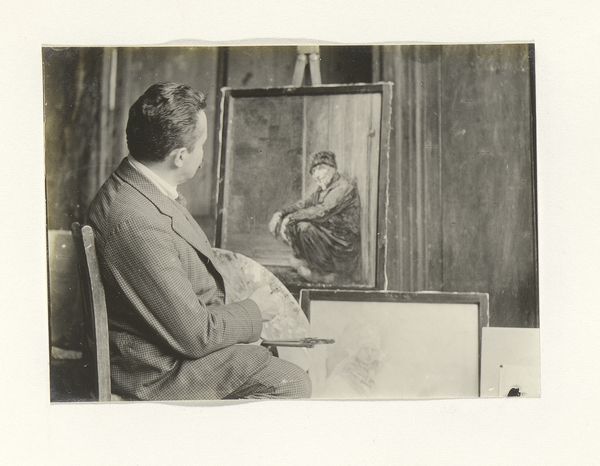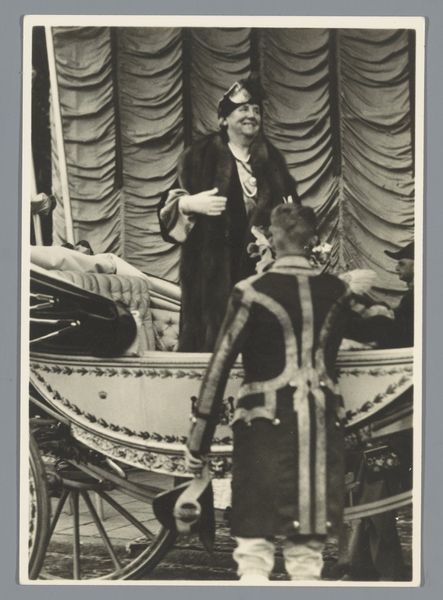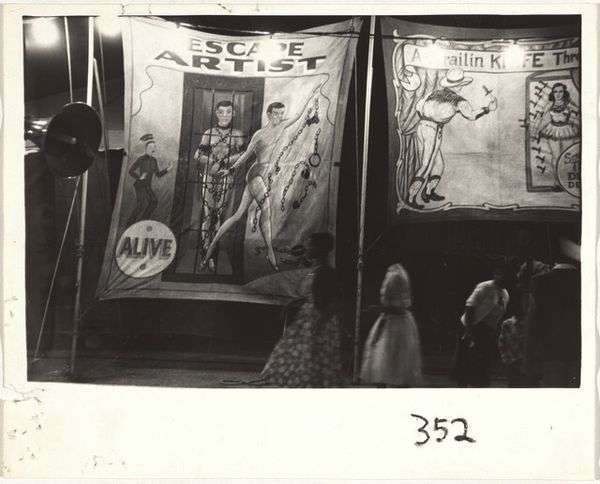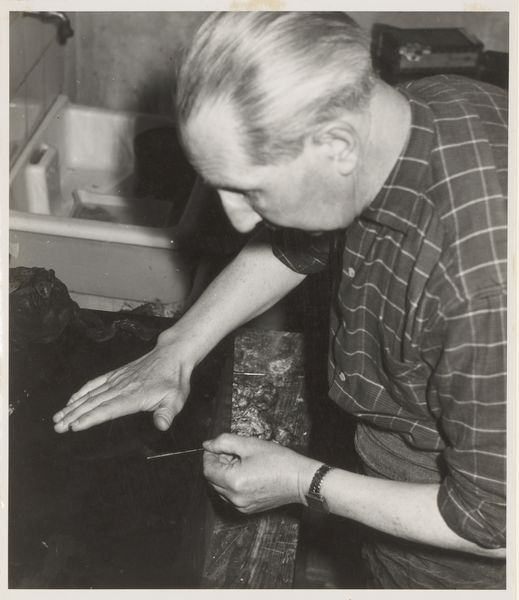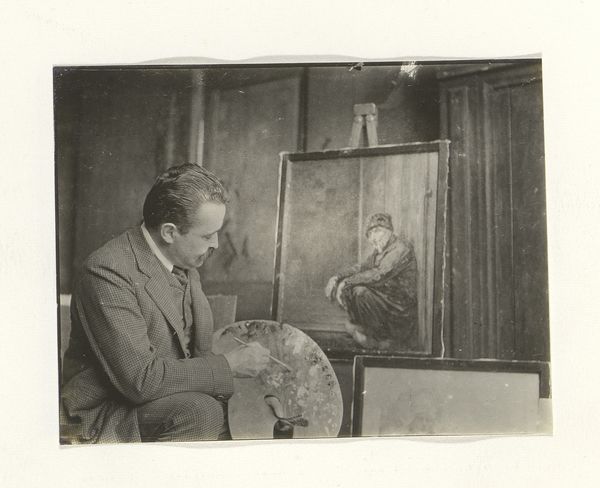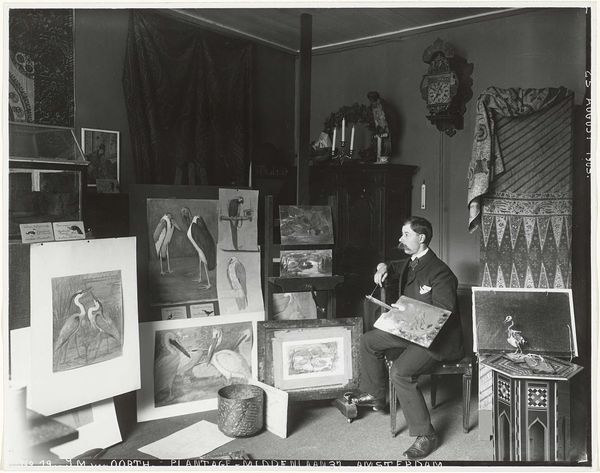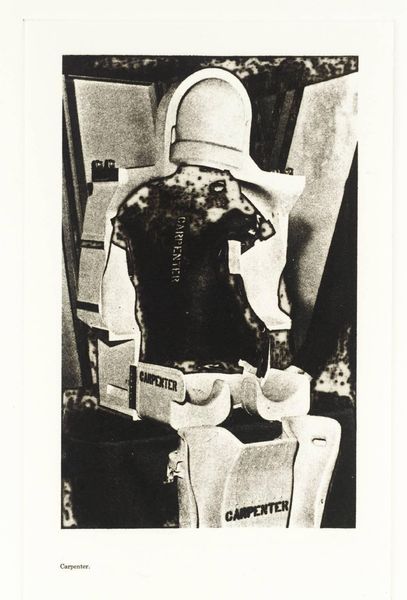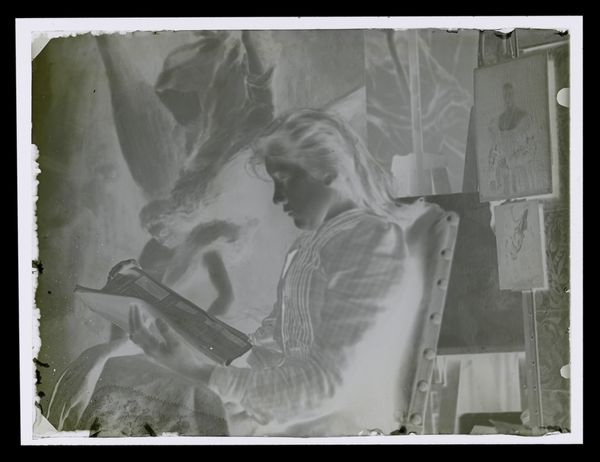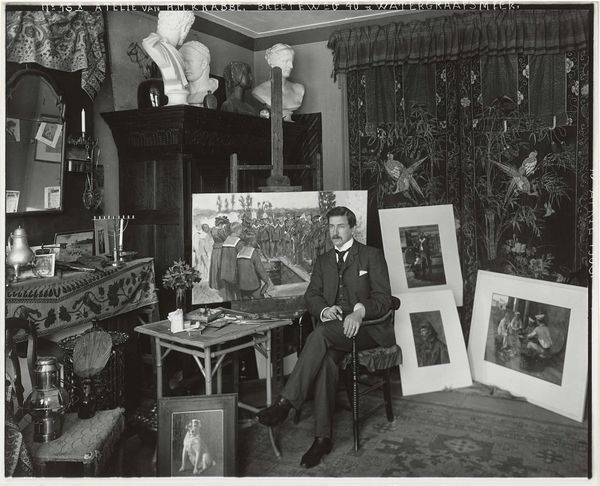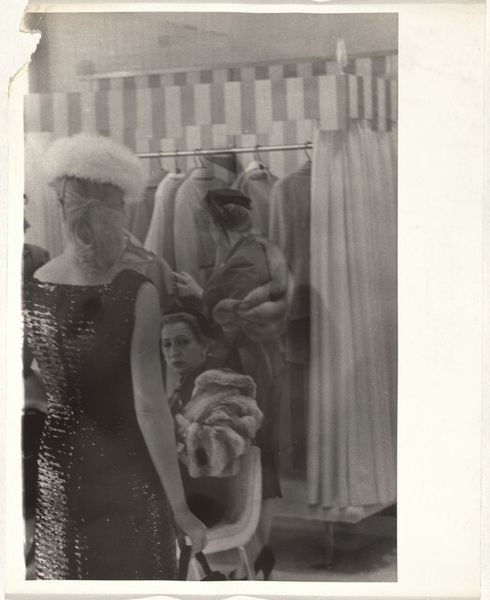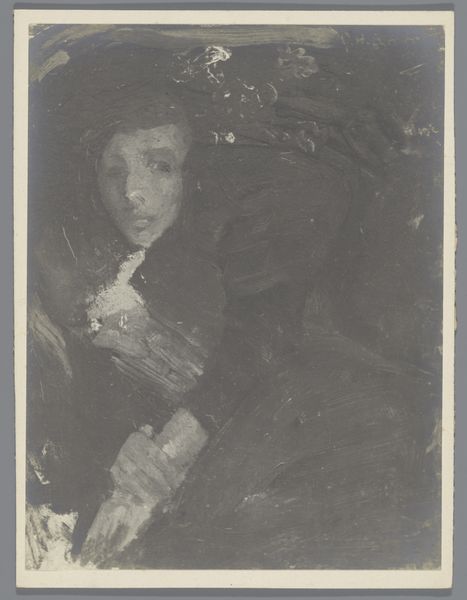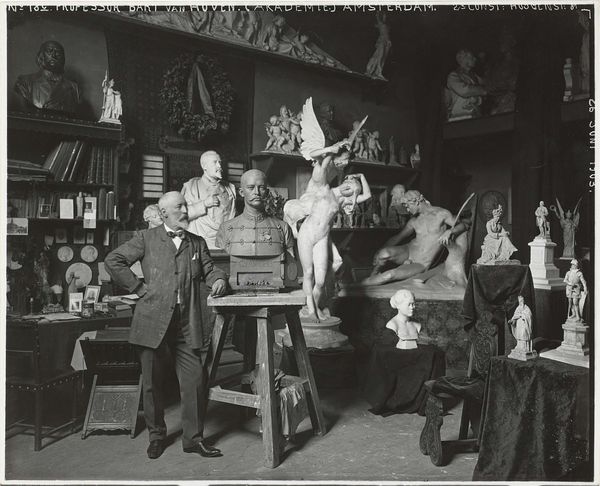
Performance met gewei (Leo Braat) en schilderij surrealisme tentoonstelling Galerie Robert Amsterdam 1938 1938
mixed-media, performance, photography
portrait
mixed-media
performance
photography
historical photography
history-painting
surrealism
Dimensions: height 180 mm, width 118 mm
Copyright: Rijks Museum: Open Domain
Editor: Here we have a photograph documenting a 1938 performance featuring Leo Braat at the Galerie Robert in Amsterdam. It's described as a "Performance met gewei," using mixed media elements. I’m immediately struck by the surreal combination of elements – the antlers, the painting within the larger structure... It's a bit unsettling, really. What's your take? Curator: Unsettling is a key word. This photograph, a document of a live performance, stages a confrontation. Consider the date: 1938. Surrealism, by this time, was deeply engaged with anxieties surrounding a rapidly changing world, escalating political tensions, and the rise of fascism. Editor: I hadn't really considered the political climate... Curator: Exactly. The antlers could be read as a symbol of traditional masculinity, but presented in such an absurd way, it feels destabilized, doesn't it? The embedded painting, obscured and distorted, hints at a fragmented history or a suppressed narrative. This era’s avant-garde often weaponized absurdity, offering critical commentary through unconventional mediums. It serves as both resistance and an invitation to reconsider dominant societal narratives. Does this reading add another layer to your experience of the image? Editor: Absolutely! I initially saw it as bizarre, but now I'm seeing how it might be subverting traditional power structures and commenting on the social issues of the time. Curator: The performance is essentially staging questions about power, representation, and identity. Consider the layering; what do you think it might be conveying? Editor: It gives a lot to consider, both the performance, the photo capturing it, the layering of props… it's quite complex! Curator: It pushes us to interrogate history, representation and the self. Hopefully you found that perspective shift beneficial for a new understanding. Editor: Definitely, thank you! I never would have considered those angles before, so this was extremely helpful.
Comments
No comments
Be the first to comment and join the conversation on the ultimate creative platform.
